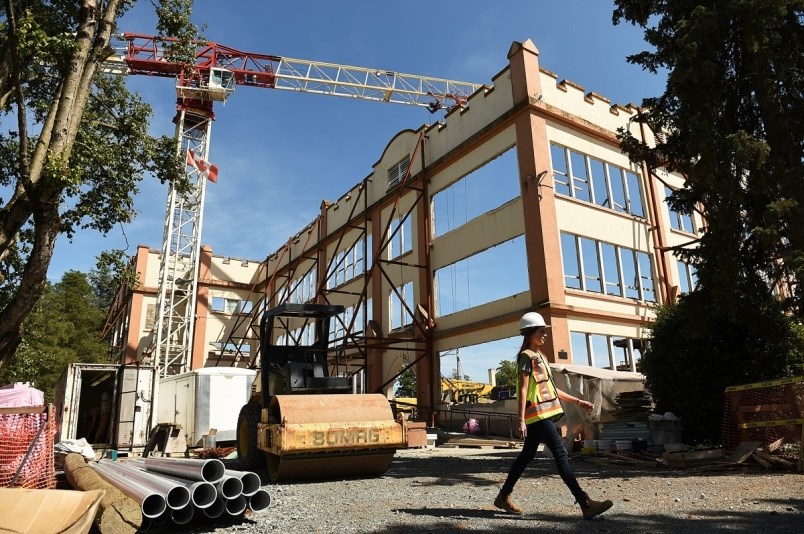What happened: The B.C. government has clarified guidelines around COVID-19 management measures for the construction industry to address concerns that workers at construction sites are being put at risk of contracting and spreading the virus.
Why it matters: While the new guidelines allow construction to continue, they could make it more difficult for major projects like the Site C dam construction projects to comply, given the sheer number of the work forces.
One of the questions reporters have asked public health officer Dr. Bonnie Henry during daily briefings on COVID-19 is whether construction projects could or should be shut down.
Under a provincial state of emergency declaration, restaurants, bars, hair salons and tattoo parlours have been ordered shut down. But construction workers continue to work at residential and industrial projects.
The B.C. Building Trades has raised concerns over worker safety, especially at large construction projects like the LNG Canada project in Kitimat and the Site C dam project near Fort St. John.
“We are calling for remote-camp megaprojects in B.C. to be tooled down to all but essential or critical-path work,” Andrew Mercier, executive director of the B.C. Building Trades Council, said in a press release. “We need to flatten the curve and alleviate pressure on the rural health care systems.
“We realize that there will be a financial consequence to our members, but the health and safety of our workers is paramount. Once we get through this, we have no doubt that construction work will form part of the stimulus to get this province back on its feet — but we are going to need safe and healthy workers for that.”
On March 16, LNG Canada announced it would reduce its workforce in Kitimat by half.
BC Hydro has begun to reduce its workforce at the Site C dam project, but there are still well over 1,000 workers on site, most of whom stay in a large work camp, which has a capacity of 1,900.
Dave Conway, community relations manager for Site C, said that, as of last week, the project would have about 1,700 workers on site, and the main contractor planned to reduce the number of people staying at the work camp by 350 people.
“We are presently working on the work force reduction plan and working with the project contractors and unions to safely scale back certain activities at the project site,” Conway said.
In a press release Sunday, the new COVID-19 Joint Information Centre released guidelines for construction sites.
The guidelines allow for construction to continue, provided no more than 50 workers are working in any one space at a time.
Site managers need to take the following steps:
- post signage that limits the number of people in an elevator at one time to four;
- reduce face-to-face meetings and hold site meetings in open spaces or outside;
- increase the number of hand-washing stations and post signage identifying where they are located;
- Maintain a list of workers on site and update it daily;
- Clean all common areas at the end of each day, including washrooms, offices, common tables, desks, light switches and door handles; and
- send anyone whom with COVID-19 symptoms home and require them to maintain 14 days of isolation.
They are also asked to stay updated on guidelines by checking the government’s
Anne McMullin, CEO of the Urban Development Institute (UDI), which represents developers, welcomed the new guidelines.
“This provides further clarity by the province to ensure our workers, their families and our communities remain safe while working at construction sites," she said.
Read more from



